Related Research Articles

The title of Earl of Athlone has been created three times.
The title of Viscount Mountjoy has been created three times, twice in the Peerage of Ireland and once in the Peerage of Great Britain. The creations in the Peerage of Ireland were made in 1683 and 1795, and became extinct in 1769 and 1829, respectively. The creation in the Peerage of Great Britain occurred in 1796, as a subsidiary title for the Marquess of Bute, to which title it is still attached.
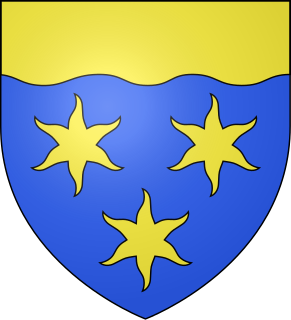
Earl of Radnor is a title which has been created twice. It was first created in the Peerage of England in 1679 for John Robartes, 2nd Baron Robartes, a notable political figure of the reign of Charles II. He was made Viscount Bodmin at the same time. Robartes was the son of Richard Robartes, who had been created Baronet in July 1621 and Baron Robartes, of Truro, in the Peerage of England in 1626. All three titles became extinct on the death of the fourth Earl in 1757. Anna Maria Hunt, great-niece of the fourth Earl, married the Hon. Charles Bagenal-Agar, youngest son of James Agar, 1st Viscount Clifden of Gowran. Their son Thomas James Agar-Robartes was created Baron Robartes in 1869. For more information on this title, see the Viscount Clifden.

Baron Berners is a barony created by writ in the Peerage of England.

Earl of Halifax is a title that has been created four times in British history—once in the Peerage of England, twice in the Peerage of Great Britain, and once in the Peerage of the United Kingdom. The name of the peerage refers to Halifax, West Yorkshire.
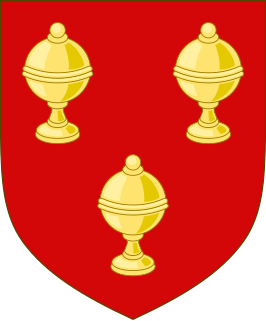
The peerage title Earl of Ormond and the related titles Duke of Ormonde and Marquess of Ormonde have a long and complex history. An earldom of Ormond has been created three times in the Peerage of Ireland.

Earl of Londonderry is a title that has been created three times in the Peerage of Ireland. The first creation came in 1622 in favour of Thomas Ridgeway, 1st Baron Ridgeway, who served as Treasurer of Ireland and was involved in the colonisation of Ulster. He had already been created a Baronet, of Torrington in the County of Devon, in 1611, Lord Ridgeway, Baron of Gallen-Ridgeway, in the Peerage of Ireland, in 1616, and was made Viscount Gallen-Ridgeway at the same time as he was granted the earldom, also in the Peerage of Ireland. The titles became extinct on the death of his great-grandson, the fourth Earl, in 1714.
Earl of Dorset is a title that has been created at least four times in the Peerage of England. Some of its holders have at various times also held the rank of marquess and, from 1720, duke.
Earl of Feversham is a title that has been created three times, once in the Peerage of England, once in the Peerage of Great Britain and once in the Peerage of the United Kingdom. All three creations are now extinct.
The titles of Baron Mountjoy and Viscount Mountjoy have been created several times for members of various families, including the Blounts and their descendants and the Stewarts of Ramelton and their descendants.

Viscount Clifden, of Gowran in the County of Kilkenny, Ireland, was a title in the Peerage of Ireland. It was created on 12 January 1781 for James Agar, 1st Baron Clifden. He had already been created Baron Clifden, of Gowran in the County of Kilkenny, in 1776, also in the Peerage of Ireland. The Viscounts also held the titles of Baron Mendip in the Peerage of Great Britain from 1802 to 1974 and Baron Dover from 1836 to 1899, when this title became extinct, and Baron Robartes from 1899 to 1974, when this title became extinct, the two latter titles which were in the Peerage of the United Kingdom. The interrelated histories of the peerages follows below.
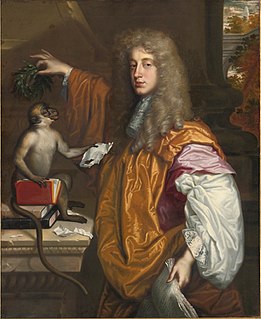
Earl of Rochester was a title that was created twice in the Peerage of England. The first creation came in 1652 in favour of the Royalist soldier Henry Wilmot, 2nd Viscount Wilmot. He had already been created Baron Wilmot, of Adderbury in the County of Oxford, in 1643, also in the Peerage of England. He was the son of Charles Wilmot, who had been elevated to the Peerage of Ireland as Viscount Wilmot, of Athlone, in 1622. Lord Rochester died in 1658 and was succeeded by his son John Wilmot, 2nd Earl of Rochester. He was a poet, a friend of King Charles II, and the writer of satirical and bawdy poetry. He married the heiress Elizabeth Malet. He was succeeded on his death in 1680 by his only son, the third Earl. He died at a young age the following year, when the titles became extinct.
There have been two creations of the title Baron Raby, both in the Peerage of England. The first was in 1640, as a subsidiary title of the Earl of Strafford. The first earl was attainted and his peerages declared forfeit in 1641, but heir obtained a reversal in 1662. On his death, all his peerages became extinct save the Barony of Raby, which continued until the death of the fifth baron in 1799. Confusingly, the third baron was again created Earl of Strafford in 1711, and the earldom and barony remained merged until their mutual extinction.
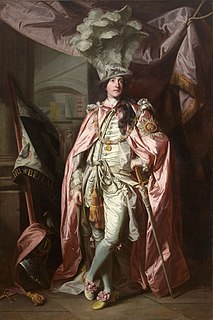
Earl of Bellomont, in the Kingdom of Ireland, was a title that was created three times in the Peerage of Ireland. The first creation came on 9 December 1680 when Charles Kirkhoven, 1st Baron Wotton, was made Earl of Bellomont. He had already been created Baron Wotton, of Wotton in the County of Kent, in the Peerage of England on 31 August 1650. He was childless and both titles became extinct on his death in 1683.
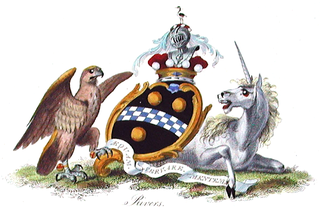
Baron Rivers was a title that was created four times in British history, twice in the Peerage of England, once in the Peerage of Great Britain and once in the Peerage of the United Kingdom.

The titles Baron Montacute or Baron Montagu were created several times in the Peerage of England for members of the House of Montagu. The family name was Latinised to de Monte Acuto, meaning "from the sharp mountain"; the French form is an ancient spelling of mont aigu, with identical meaning.

The title of Baron Herbert of Chirbury was created five times, twice in the Peerage of England, twice in the Peerage of Great Britain and once in the Peerage of the United Kingdom.

Earl of Upper Ossory was a title in the Peerage of Ireland. It was created on 5 October 1751 for John FitzPatrick, 2nd Baron Gowran, who later represented Bedfordshire in the House of Commons. He was the son of Richard FitzPatrick, who had been created Baron Gowran on 27 April 1715, also in the Peerage of Ireland. Lord Gowran had represented Harristown and Queen's County in the Irish House of Commons before his elevation to the peerage. The first Earl's son, the second Earl, also sat as Member of Parliament for Bedfordshire and was Lord Lieutenant of Bedfordshire. In 1794, he was created Baron Upper Ossory, of Ampthill in the County of Bedford, in the Peerage of Great Britain. However, all three titles became extinct on his death in 1818.
Viscount Mount Cashell was a title that was created twice in the Peerage of Ireland. The first creation came in 1706 in favour of Paul Davys. He was made Baron Mount Cashell at the same time, also in the Peerage of Ireland. The titles became extinct on the death of the third Viscount in 1736. The second creation came in 1766 in favour of Stephen Moore. For more information on this creation, see Earl Mount Cashell.

There have been several peerage titles created with the name Avondale, referring to the dale of the Avon Water in Scotland. The word strath also means valley, and the area is now better known as Strathaven.